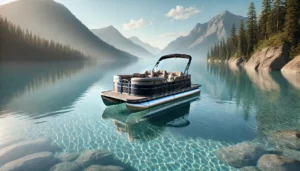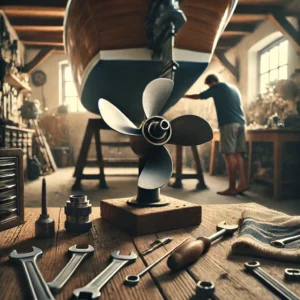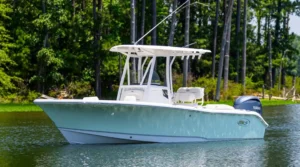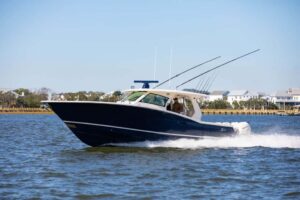Boat Fuel 101: How to Protect Your Engine and Avoid Costly Mistakes
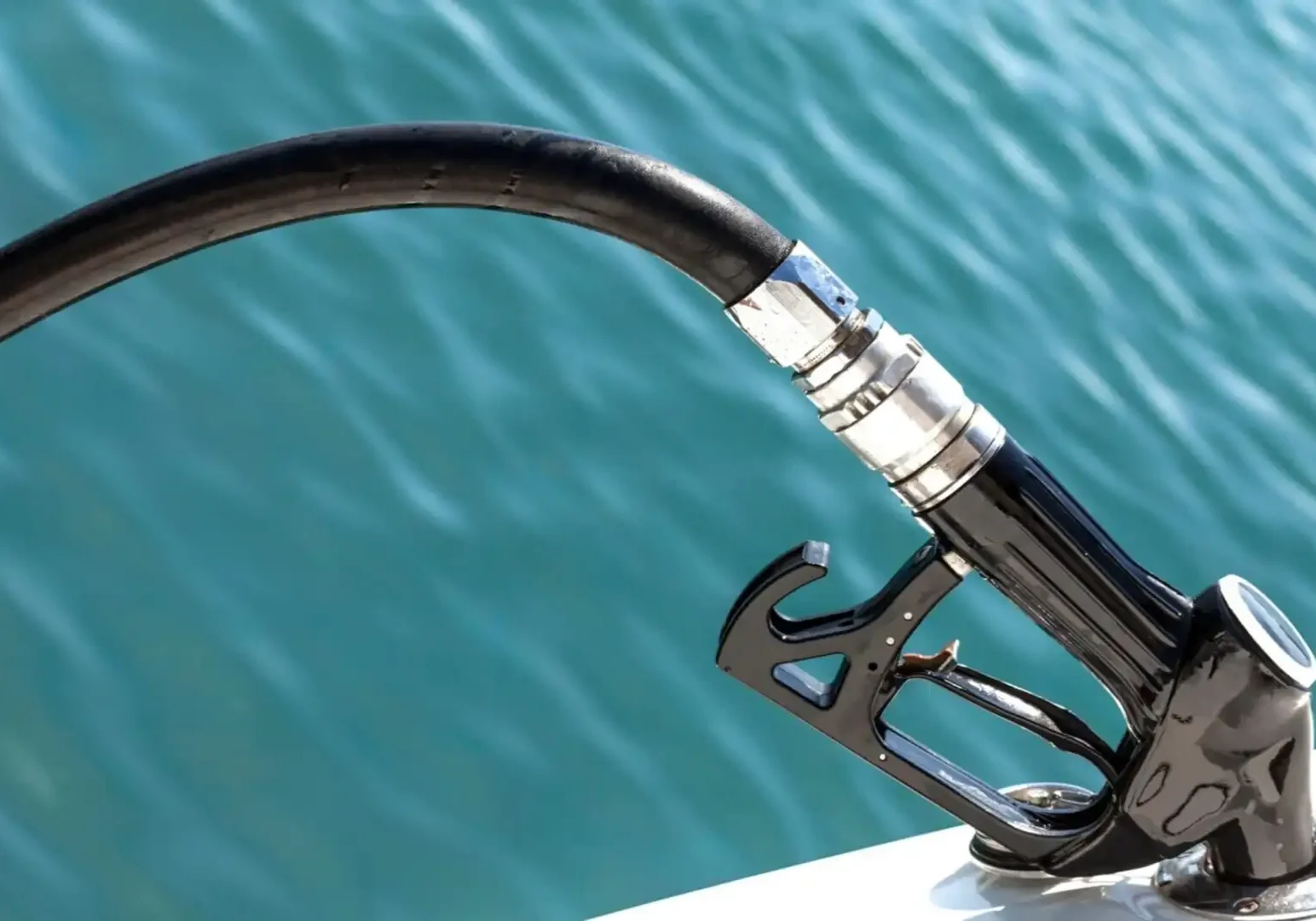
Ask any marine technician, and they’ll tell you—fuel-related issues are one of the most common causes of engine trouble. Whether you’re running a Mercury, Yamaha or other brand of outboard, the quality of the fuel in your tank directly affects how your boat performs and how long it lasts. Unlike cars that burn through fuel quickly and get refueled regularly, boats often sit idle between outings. That downtime, combined with exposure to moisture and the growing use of ethanol-blended gasoline, creates the perfect storm for fuel system problems. From clogged filters to corrosion and engine failure, bad fuel can leave you stranded and facing expensive repairs. But the good news? Most of these issues are preventable. Understanding the basics of boat fuel—and how to take care of your fuel system—can save you headaches, money, and lost time on the water. This guide covers what type of fuel to use, how to avoid ethanol damage, and the simple steps every boater should take to protect their engine.
What Kind of Fuel Should You Use in a Boat?
Choosing the right fuel for your boat might seem simple, but it plays a critical role in keeping your engine running smoothly. Most modern outboard engines—whether Mercury, Yamaha, Suzuki, or Honda—are designed to run on unleaded gasoline with up to 10% ethanol (E10) and an octane rating of at least 87. Using fuel outside of these guidelines can cause serious performance issues or even void your warranty.
Avoid High-Ethanol Fuels (E15 and E85)
While E10 is acceptable in most marine engines, fuels with more than 10% ethanol—like E15 or E85—should never be used in a boat. Ethanol attracts moisture, which leads to phase separation (when water and fuel separate in the tank), causing corrosion, clogged fuel systems, and potentially costly repairs.
Ethanol-blended fuels also degrade faster than pure gasoline. That’s especially important for boats, which often sit for long periods between uses.
Ethanol-Free (REC-90) Fuel
When available, ethanol-free marine fuel (often labeled REC-90) is a better choice. It has a longer shelf life, doesn’t absorb water, and offers more stability during storage. It’s especially ideal for boats that aren’t run frequently or are stored for long periods.
Bottom Line
- Use: Unleaded gasoline, 87 octane minimum, E10 or less
- Avoid: E15, E85, or any fuel with over 10% ethanol
- Preferred: Ethanol-free marine fuel (REC-90), especially for seasonal storage or infrequent use
By simply choosing the right fuel, you’re taking the first step toward protecting your engine and avoiding future headaches.
The Ethanol Problem
Ethanol might work fine in your car, but it’s a different story on the water. Ethanol-blended gasoline, especially E10, has become the standard at gas stations across the U.S.—and while it’s technically approved for most modern outboards, it brings a set of serious challenges for boaters.
Why Ethanol Causes Problems in Boats
Ethanol is hygroscopic, meaning it attracts and absorbs water from the air. In the marine environment—where humidity and temperature swings are common—this becomes a big problem. Over time, that moisture buildup leads to a condition called phase separation, where the water and fuel separate inside your tank. When this happens, the ethanol-water mix settles at the bottom, right where your fuel pickup draws from. The result? Hard starts, rough running, poor performance, or even engine damage.
It Doesn’t Store Well, Either
Another issue with ethanol-blended fuel is its short shelf life. Unlike ethanol-free gas, E10 begins to degrade in as little as 30 days. If your boat sits for weeks between trips—or is stored for the off-season—this can lead to varnish, sludge, and gum buildup inside your fuel system.
Symptoms of Ethanol-Related Fuel Issues
- Difficulty starting the engine
- Engine stalls or sputters
- Clogged fuel filters
- Corrosion in fuel tanks and components
- Reduced performance or fuel economy
Can You Avoid Ethanol Altogether?
If your local marina offers ethanol-free fuel (REC-90 or marine gas), it’s worth the extra cost—especially for seasonal or infrequent use. But if E10 is your only option, preventative maintenance becomes essential to protect your engine and fuel system.
How to Prevent Fuel System Issues
While ethanol-related problems are common, they’re also largely preventable. With a few smart habits and regular fuel maintenance, you can avoid costly repairs and keep your boat running smoothly all season long.
Use a Marine Fuel Stabilizer
One of the simplest ways to protect your fuel system is to add a fuel stabilizer every time you fill up—especially if your boat won’t be used for a few weeks. A good marine-grade stabilizer helps prevent ethanol breakdown, reduces moisture buildup, and keeps your gas fresh for up to 12 months.
This is especially important before winterizing your boat or during long periods of storage. Fuel that sits untreated can degrade quickly and damage internal components like injectors, carburetors, and fuel pumps.
Keep Your Fuel Tank Full (But Not Overfilled)
A partially filled fuel tank allows more air (and moisture) to accumulate inside. Keeping your tank at least ¾ full minimizes the airspace, reducing the chance of condensation and water contamination.
But avoid overfilling—leave room for expansion, especially in warm weather, to prevent fuel from spilling out of vents.
Run Your Engine Regularly
Like any machine, boat engines don’t like to sit unused. If your boat has been idle for several weeks, running it—at least briefly—helps cycle fuel through the system, identify issues early, and keep internal components lubricated.
Buy Fuel from Reputable Marinas
Not all fuel docks are created equal. Try to buy from high-traffic marinas where fuel is regularly replenished. Old, contaminated, or waterlogged fuel is more common at less-frequented stations.
Pro Tip: Keep a small supply of spare fuel filters and water-separating filters on board. If you ever encounter water or debris in your fuel, you’ll be glad you did.
Fuel Filters and Water Separators
Even with good fuel and regular use, your boat’s first line of defense against contamination is its fuel filter and water-separating filter. These unsung heroes play a critical role in keeping your engine running smoothly by capturing dirt, debris, and—most importantly—water before it reaches your fuel system.
What They Do
- Fuel filters trap fine particles that can clog injectors or carburetors.
- Water separators remove moisture from the fuel line before it hits your engine.
Most marine filters are combined units that do both jobs. If water builds up in the separator bowl, it needs to be drained or the filter replaced—otherwise, water can still make its way into your engine.
How Often Should You Replace Them?
Manufacturers recommend changing fuel/water separating filters at least once per season, or every 100 hours of engine use—whichever comes first. But if you boat in humid or rainy conditions, or suspect water in your fuel, inspect them more often.
Look for signs like:
- Water or sediment in the clear bowl (if equipped)
- Reduced engine performance
- Difficulty starting
Keep Spares on Board
Having a spare filter and wrench in your onboard toolkit is a smart move. If your engine suddenly sputters or stalls, a quick filter change at the dock (or even on the water) can get you back up and running without a costly tow.
Best Practices at the Fuel Dock
Filling up your boat might seem routine, but how you fuel can make a big difference in protecting your engine and keeping your fuel system clean. These best practices help reduce the risk of water intrusion, fuel spills, and accidental overfills—especially important at busy marinas and fuel docks.
Avoid Overfilling the Tank
It’s tempting to top it off “just a little more,” but that can lead to fuel expansion and spillage—especially in warmer weather. Boats don’t have vapor recovery systems like cars, so when fuel heats up, it expands and can overflow through vents.
Fuel Slowly and Steadily
Use a moderate, steady flow when fueling. Rapid fill-ups can create back pressure, causing fuel to burp out of the fill or vent line. Take your time, and keep a watchful eye on the fuel level.
Check the Fuel Label
Before inserting the nozzle, verify the ethanol content—especially if you’re fueling at a gas station instead of a marina. Remember: E10 max. Never use E15, E85, or any high-ethanol blend in a marine engine.
Watch the Fuel Vent
If fuel starts spilling out of the vent, stop immediately—that means your tank is full. Consistently overfilling can damage the vent system and increase the risk of water entering your tank.
Off-Season & Long-Term Storage Tips
Letting your boat sit idle for weeks—or even months—without prepping the fuel system is one of the quickest ways to run into trouble come spring. Whether you’re winterizing or just planning a break from boating, taking the time to protect your fuel system before storage can save you from clogged injectors, damaged fuel lines, and frustrating no-start situations later on.
Use a Marine Fuel Stabilizer
If you haven’t already added a fuel stabilizer, now’s the time. Treat the fuel according to the product’s instructions and run the engine for 10–15 minutes so the treated fuel circulates through the entire system. This prevents ethanol breakdown, varnish buildup, and phase separation while your boat sits.
Fill the Tank (But Leave Some Room)
Keeping your tank around 90% full helps reduce air space, which limits condensation and water buildup inside the tank. But don’t fill it to the brim—leave room for fuel expansion during temperature swings.
Fog the Engine (If Recommended)
For two-stroke and some four-stroke engines, fogging oil can be sprayed into the intake while the engine is running to protect internal components from corrosion. Check your engine manufacturer’s storage recommendations.
Drain or Replace the Fuel/Water Separator
If your separator is due for a change, now’s a good time to do it. If not, at least drain any water from the bowl so it doesn’t sit in the system all winter.
Shut Off Fuel Valves (If Equipped)
On some boats, you may have a manual fuel shut-off valve. Close it during storage to prevent fuel from slowly leaking or back-flowing into unintended areas.
Proper off-season fuel care is one of the most overlooked but critical aspects of boat maintenance. A few preventative steps now can help ensure your engine fires right up next season—without surprises.
Fuel Care Isn’t Complicated—But It Is Critical
Fuel might seem like an afterthought—just something you pump and go—but in the world of boating, it’s one of the most important systems to maintain. Ethanol-blended gasoline, long storage periods, and moisture-rich marine environments all add up to serious risk if your fuel system isn’t properly cared for.
The good news? Preventing fuel problems is easier than fixing them. Choosing the right fuel, adding a stabilizer, replacing your fuel/water separator, and following smart fueling habits all go a long way toward protecting your engine and saving you money in the long run.
Whether you’re cruising with family or heading offshore to fish, a reliable engine starts with clean, stable fuel. Take care of your fuel system, and your boat will take care of you.
Search
Recent Posts
When dreaming of owning a boat,…






